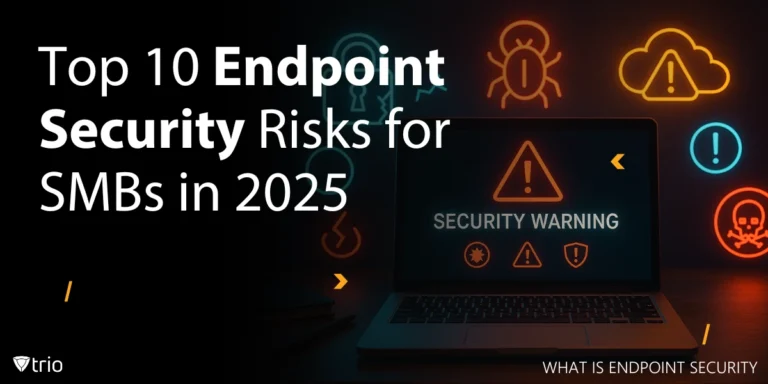Cloud migration, the pivotal process of moving digital operations to cloud environments, stands as a cornerstone in the digital transformation journey of many businesses today. Understanding the intricacies of migrating to the cloud is imperative for companies aiming to navigate through these changes successfully. This transition is not merely about shifting data from one location to another; it's a comprehensive technology integration that touches every facet of organizational operations.
Particularly for enterprises leveraging Mobile Device Management (MDM) solutions, cloud migration can significantly enhance operational efficiency and security. The focus of this discussion is to shed light on various cloud migration strategies, tools, and best practices. By equipping businesses, especially those incorporating MDM solutions, with actionable insights, we aim to either kickstart or optimize their journey towards cloud adoption. In essence, understanding the right approach to cloud migration is a stepping stone to unlocking the full potential of digital and mobile technologies in a cloud-centric business landscape.
Understanding Cloud Migration
Cloud migration involves the strategic process of moving on premise to cloud-based systems, encapsulating a company's shift from premises infrastructure to utilizing expansive cloud platforms. This transition not only fosters business agility but also elevates scalability and innovation capabilities. By embarking on a migration project, organizations unlock the potential for improved disaster recovery processes, enhanced data management, and a more flexible operational framework. The significance of data migration from on premise to cloud extends beyond mere data relocation; it signifies a transformative step towards leveraging technological advancements to meet evolving business demands.
When delving into the types of cloud migration, it’s essential to grasp the variety of models available, such as Infrastructure as a Service (IaaS), Platform as a Service (PaaS), Software as a Service (SaaS), and hybrid solutions. Each model serves distinct business objectives, catering to various needs from the foundational layer of computing resources in IaaS, the development environment in PaaS, to the application level in SaaS. Hybrid models offer a blend, facilitating a seamless transition for premises systems to the cloud while maintaining a portion of the infrastructure on-premise for specific needs.
Cloud Migration Strategies
Navigating through the myriad of strategies for moving to the cloud, it's crucial to understand the nuances of each approach and identify which aligns best with your business objectives and operational requirements.

Lift and Shift
The "lift and shift" method, one of the types of cloud migration, involves moving applications and data from an existing on-premises infrastructure directly to the cloud without making changes to the applications themselves. This strategy is particularly appealing for organizations looking to quickly realize the benefits of moving to the cloud, such as cost savings on infrastructure and improved disaster recovery options. It is best suited for scenarios where businesses aim to reduce physical data center dependencies but are not ready to invest in modifying their applications. The simplicity of a lift and shift strategy can significantly expedite the cloud migration plan, making it a popular first step for many companies embarking on their cloud journey.
Replatforming
Replatforming takes the cloud migration plan a step further by making some adjustments to the applications to take advantage of cloud-specific features and services. This method strikes a balance between the quick and straightforward approach of lift and shift and the more involved process of refactoring. By choosing replatforming, businesses can improve their application's performance and reduce costs without the need for extensive changes. It's an ideal approach when companies seek to leverage cloud solution benefits, like enhanced scalability and resilience, without completely overhauling their existing application architecture.
Refactoring/Re-architecting
Refactoring, or re-architecting, involves significant modifications to an application's existing code base to fully exploit cloud-native features, ensuring optimal performance, scalability, and flexibility in a cloud environment. This strategy is considered among the different types of cloud migration for organizations looking to transform their applications to be more agile, efficient, and capable of meeting changing business needs. Although refactoring requires more time and resources upfront, the long-term benefits include lower operational costs, improved efficiency, and the ability to leverage advanced cloud technologies such as serverless computing. Businesses with a forward-looking cloud migration plan, especially those incorporating cloud-based MDM solutions, often find this approach integral to achieving their long-term objectives.
Tools for Effective Cloud Migration
Navigating the cloud migration landscape requires a toolkit that can address the complex needs of moving applications and data to the cloud. Among the best cloud migration tools, AWS Migration Hub, Azure Migrate, and Google Cloud Migration stand out for their comprehensive capabilities. These platforms offer centralized locations to monitor and manage migration activities, making the migration process more cost-effective and streamlined. Each tool is designed to minimize downtime and ensure data loss prevention, crucial factors for a successful transition. By leveraging these migration tools, businesses can approach their cloud migration projects with confidence, knowing they have the support to handle various scenarios effectively.
The integration of Mobile Device Management (MDM) solutions into a cloud migration strategy plays a pivotal role in ensuring a seamless transition. MDM solutions, particularly those offered by Trio, are instrumental in managing and securing mobile devices as they move to a cloud environment. These solutions not only facilitate data loss prevention but also ensure that mobile devices continue to operate efficiently in the new cloud setting. By providing robust security measures and streamlined management capabilities, Trio’s MDM solutions help businesses overcome common challenges associated with cloud migration, such as data security and device management.
As companies navigate the complexities of transferring their operations to the cloud, incorporating a reliable MDM solution becomes indispensable in maintaining operational continuity and securing critical data. To fully grasp how Trio's MDM solutions can enhance your cloud migration journey, we invite you to explore our capabilities firsthand by trying out our free demo.
Best Practices for Cloud Migration
In the journey of on-premise to cloud migration, ensuring secure, efficient, and uninterrupted access to enterprise resources is paramount, particularly when it involves mobile device interaction. Leveraging Mobile Device Management (MDM) systems stands out as a critical strategy. MDM facilitates real-time monitoring and management of mobile devices, a necessity in today's hybrid work environments. This approach not only streamlines the migration of existing applications to the public cloud but also optimizes cost savings by reducing the need for extensive physical IT infrastructure.
Post-migration, the integration of MDM plays a vital role in maintaining a secure and efficient operational framework, especially under a Bring Your Own Device (BYOD) policy. Such policies, aligned with a hybrid work strategy, demand rigorous data security measures and application accessibility. MDM solutions ensure that employees have seamless access to necessary tools and resources, irrespective of their physical location, while safeguarding sensitive company data. This best practice underscores the significance of a well-implemented MDM strategy in maximizing the benefits of cloud migration and facilitating a flexible, yet secure, work environment.

Conclusion
Choosing the right cloud migration strategy and tools is crucial for businesses aiming to thrive in today's digital landscape. The integration of Mobile Device Management (MDM) into this process cannot be overstated, as it ensures secure and efficient management of mobile devices within modern cloud ecosystems. MDM solutions facilitate seamless access to enterprise resources, enhance security measures, and support cost-effective operations by leveraging the public cloud's scalability and flexibility. As organizations navigate from on-premise infrastructure to the cloud, prioritizing MDM becomes essential for maintaining uninterrupted business operations and adapting to hybrid work strategies effectively.
We encourage readers to consider Trio's MDM solutions as a pivotal element of their cloud migration strategy. Our expertise offers valuable guidance and support through this complex transition, ensuring your migration is not only successful but also optimizes your investment in cloud technology. By choosing professional MDM solutions, businesses can confidently manage and secure their mobile device fleet, ensuring a smooth transition to the cloud. Embrace the journey with the right partners and tools, and unlock the full potential of cloud computing for your organization.
Get Ahead of the Curve
Every organization today needs a solution to automate time-consuming tasks and strengthen security.
Without the right tools, manual processes drain resources and leave gaps in protection. Trio MDM is designed to solve this problem, automating key tasks, boosting security, and ensuring compliance with ease.
Don't let inefficiencies hold you back. Learn how Trio MDM can revolutionize your IT operations or request a free trial today!





